You have fed and raised a hog all spring, summer, and into the fall. It is now time to bring home the bacon. You got the pig to your ideal size to get the most out of it, I like ours to be right around 300 pounds, but go with your preference.
A good butcherer can be hard to find or you are aiming at being more self-sufficient, so you want to butcher the pig yourself. Imagine all of that meat the pig will provide to fill your freezer.
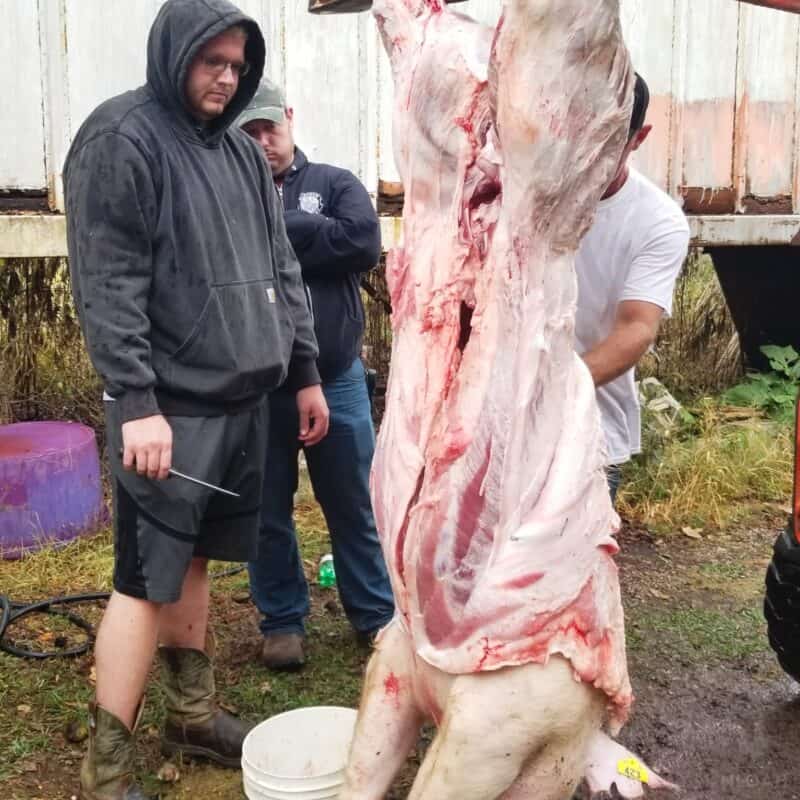
The pig that we are butchering here was bought by our local volunteer fire department from an FFA member at our county fair. We finished raising the pig out at our farm until it was time to butcher.
The fire department has a free community bean dinner every year and this year they also smoked half a hog. It was delicious!!
In case you are wondering how we got involved with this my husband and son are both on the department. The other half of the hog is being cut up and used for our meat for the department Christmas dinner.
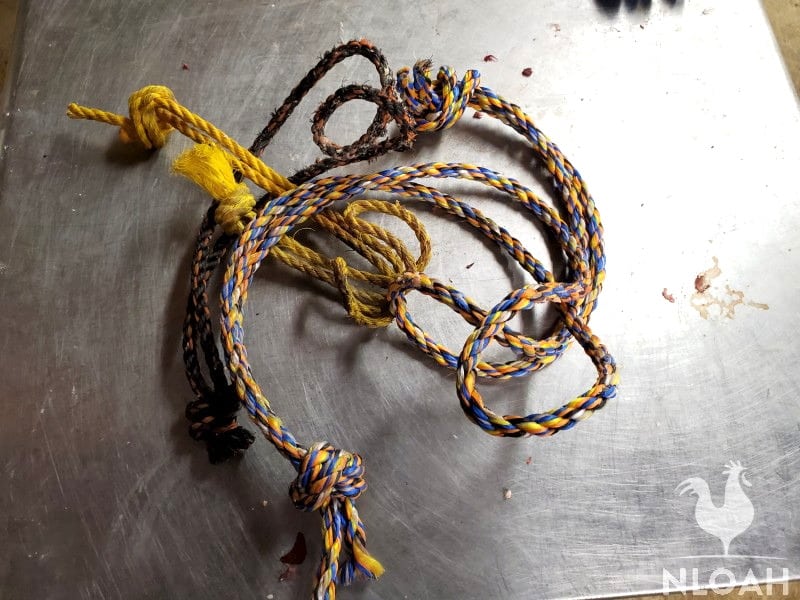
Needed Items
There are a few things that you are going to need to properly butcher the hog…
- A hoist or a means to hang
- Strong rope
- Clean work space
- Sharp knives
- Bone saw or sawzall
- Water
- Buckets or totes
- Knife sharpener
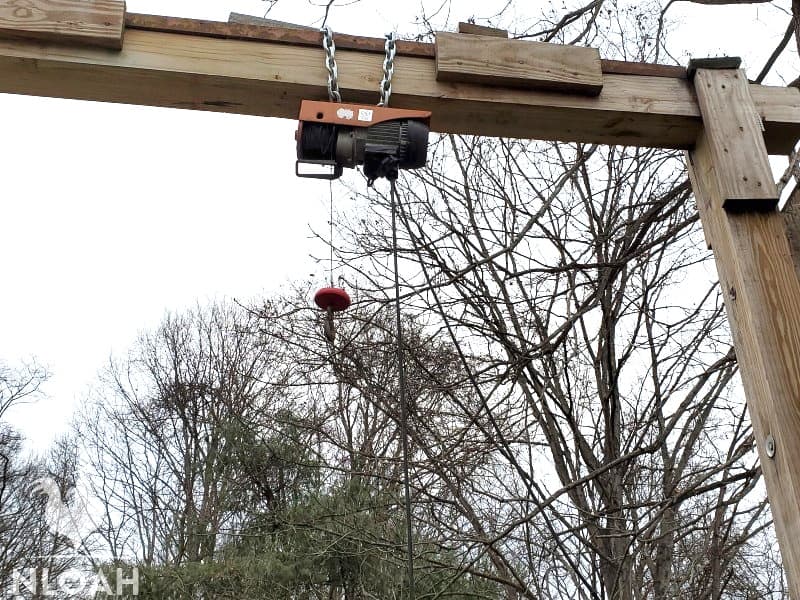
Gather all of your materials and get ready. The pig has been culled and needs to hang by its back feet. Cut a slit in the tendons at the back legs; you will feel the space there where you can hang it.
Be sure that the throat has been slit through the main artery so that it can bleed out while it is hanging. You do not want it to hold all of that blood in.
When you are processing your own pig for butcher you will learn what works best for you, and the order that you prefer to do things in. Skinning and gutting the pig can be done in whatever order you prefer.
We skin first and gut next but we also hang the hog with a hydraulic tractor or a winch. If you are working alone it may be best to gut the pig while it is laying and then remove the skin afterward to help keep the meat clean.
Preparing The Hog for Butcher
Step 1. Start with cutting around the butt hole and anus.
Go ahead and cut around the butt and anus so that you can tie it off. This is done by cutting around the sides and back, and pulling it out through the pelvic cavity.
By tying it off you are preventing any of the bowels from spilling out, and getting onto the meat while gutting it.
Step 2. Gut the pig.
If the animal is a male you will need to remove the penis first. Cut around the penis by inserting the knife into the abdominal cavity, and cutting toward the rump of the animal.
Bee extra careful not to puncture any of the organs, as you do not want to contaminate the meat. Cut through the pelvic cavity opening it up.
To gut the pig you need a sharp knife and a tote or tarp to catch the insides as most of them can be used. Start a cut near the butt of the pig on the belly side, and cut downward toward the head.
Be careful not to go too deep as you can puncture the guts, and cause them to spill out on the meat. Just run the knife right under the skin, and it will easily open it up.
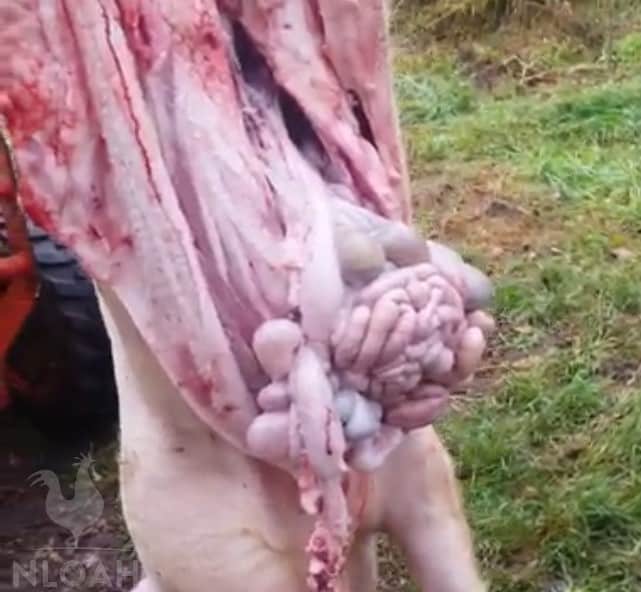
The guts are heavy and will fall out of the opening. The intestines just need a tug and some minor cutting to release them from the frame of the animal. Next remove the stomach and then the liver.
If the liver is healthy looking you will want to keep it. A diseased liver shows white spots all over. The intestines can be cleaned and used for casings for sausages if you like.
Remove the gallbladder from the liver being careful not to puncture it. You do not want this to spill out on the meat.
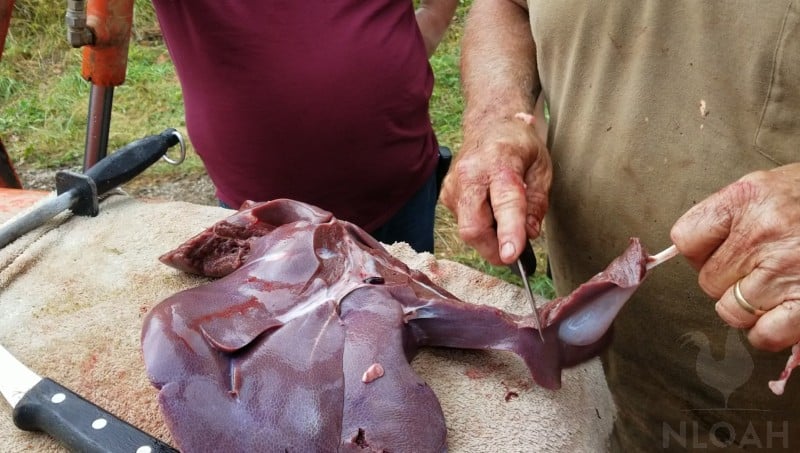
There is a divider, the diaphragm, between the bowels and the lungs and heart. Remove the diaphragm and grab a hold of the heart and lungs and pull them forward and downward to remove.
Cut the large vessel that is attached to the backbone. Remove the esophagus in the same manner, unless it comes out with the heart and lungs.
Step 3. Skin the pig, unless you are leaving it.
If you leave the skin you will be able to make cracklings. We remove the skin, it calls for less work for us because we don’t have to burn or scrape the hairs.
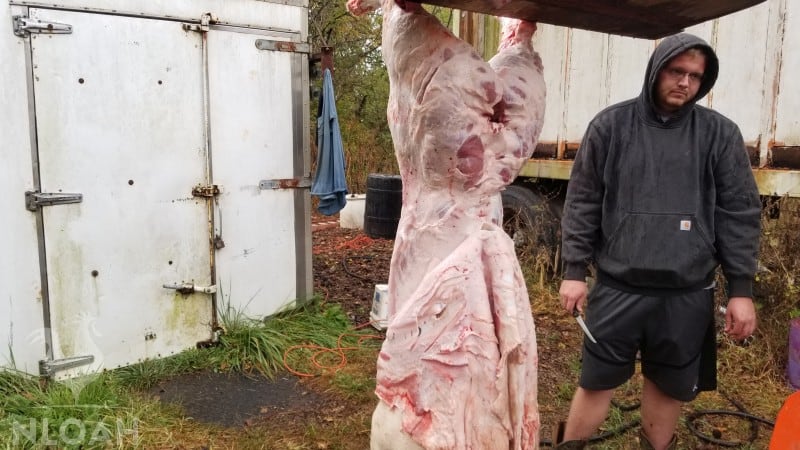
Start by cutting around the feet that are hanging. Cut the inside of the legs and then the backside so that it can all cut off with the rest of the skin. Kind of think of it like peeling a banana, peeling it to get it all to open.
Use your knife and carefully cut along the bottom of the skin and the meat; this can be done in quick swipes of the knife. Be careful not to cut into the meat.
Remove the skin from the hog all of the way to the head and then cut it off there. Once the hide is removed set it aside.
Step 4. Remove the meat from the head
The head is where you will get your jowl bacon. The jowl is also considered to be the pig’s cheeks. The jowl has several uses from being enjoyed as a fatty bacon to flavoring beans and soups.
Be sure to also remove the tongue. If you make head cheese then go ahead with that – we do not. Clean as much as the meat off as possible.
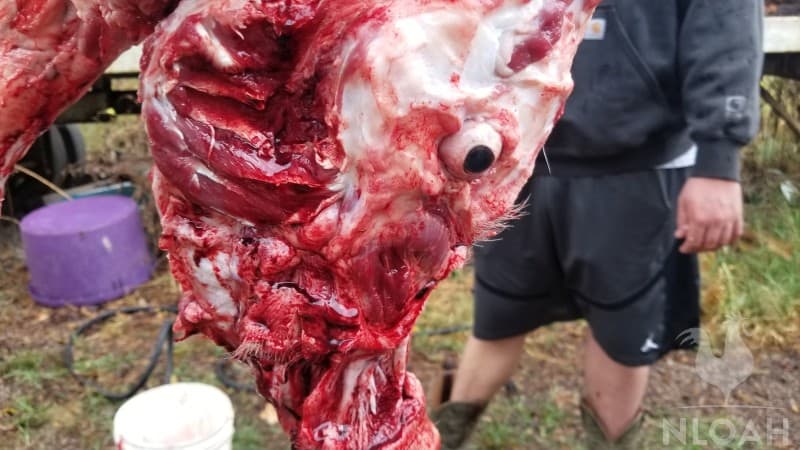
Step 5. Remove the head
Cut the head at the neck, then use the saw to cut the neck bones and remove the head. You may be able to break the bones in the neck and cut it with your knife – do whatever suits you.
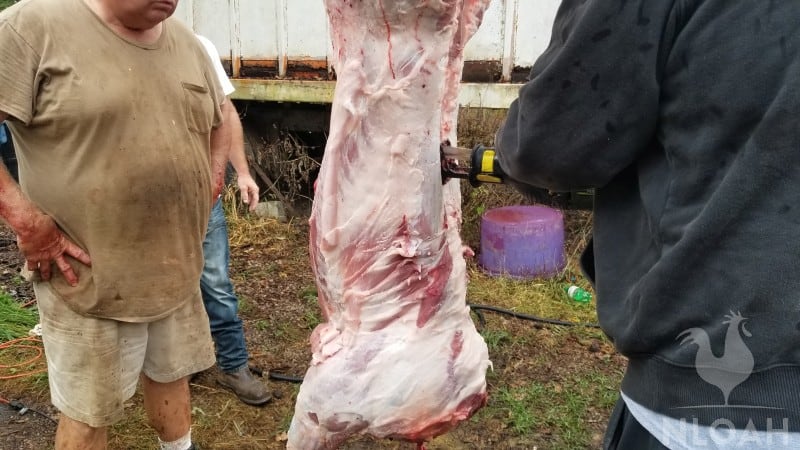
Step 6. Split the carcass in half with a saw.
Use a sawzall or a bone saw and cut the pig right down the middle of the spine from the pelvic bone to the neck. This is simple to do, especially if it is hanging.
The spinal cord will be exposed and is easily removed. Rinse off the meat once it is split to remove any bone fragments or dirt and blood from the carcass.
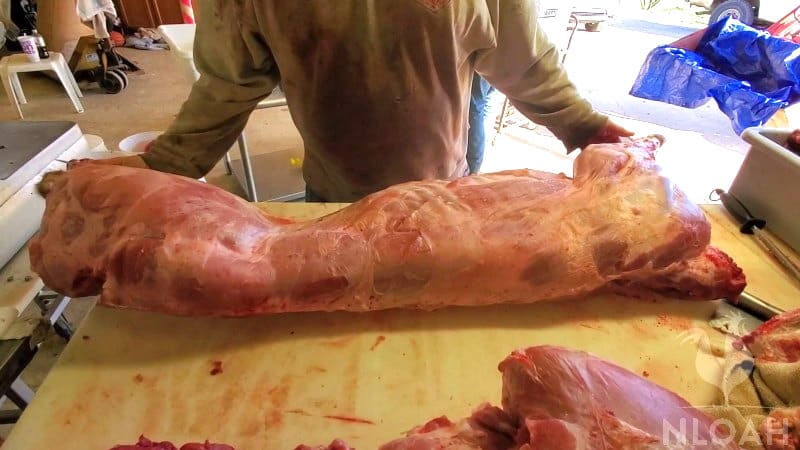
Step 7. Hang the pig.
It is best to allow the hog to hang so that it can be tender. If you have the means allow it to hang for four or five days in a freezer or in a cool area that is less than 40 degrees F (4 degrees C).
In the same hole that the hog was hanging from to skin and gut you can fahrenheit. Meat doesn’t tenderize much after seven days.
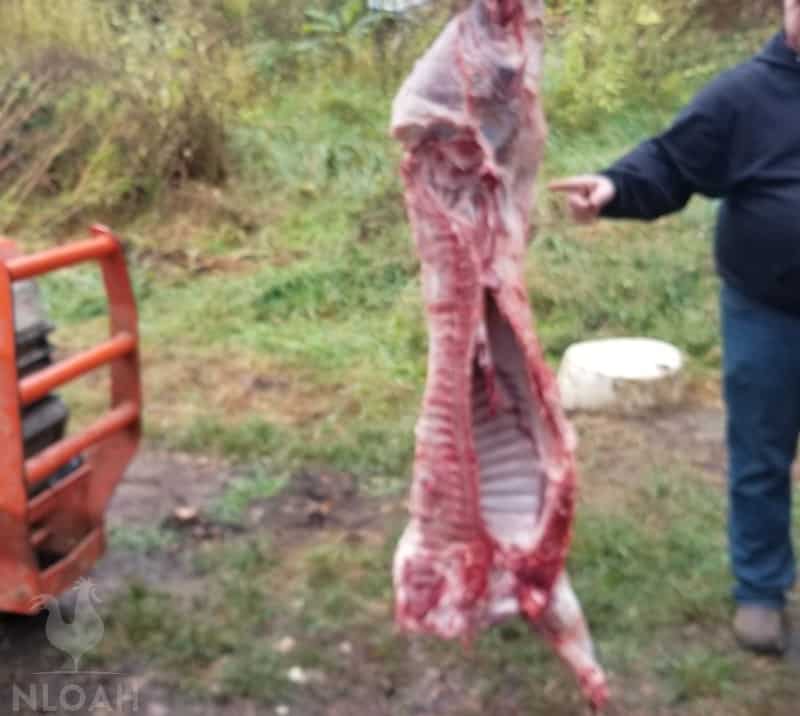
The hog can be hung by the half or even quartered to be easily managed. To hang it by quarters you will want to cut it in the right place so as not to mess up your cuts of meat when you butcher.
To quarter the hog make your cut between the 12th and 13th rib. By making this cut you now have forequarter and hindquarter sections to work with.
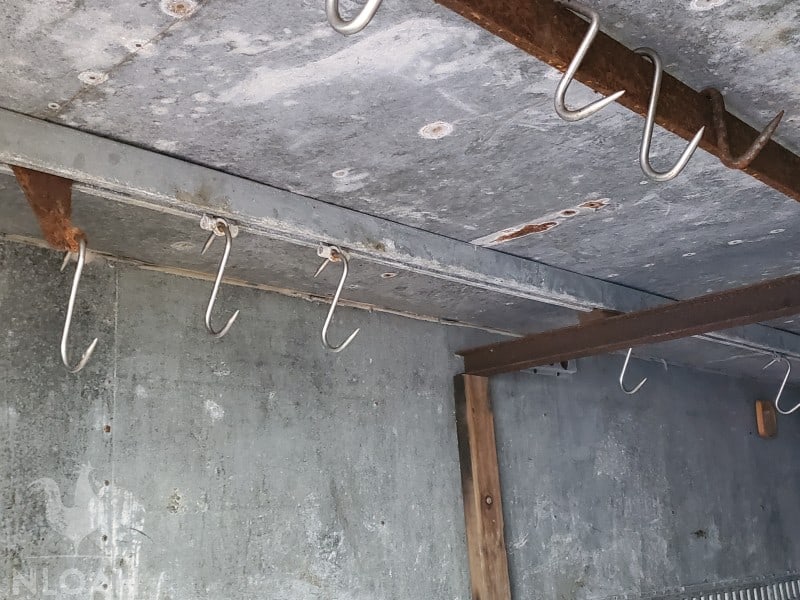
Time to Start Butchering
Take a quarter of the hog and place it in the area where you are going to cut it up. By doing the hog a quarter at a time, it is easier to handle and uses less workspace.
ou can also decide if you want them to be cut the same, or if you want a roast from one side but then steaks from the other.
Be sure to save all of the fat from the carcass. The fat can be rendered into lard later. There is also the decision as to whether you want bone in, or boneless cuts of meat.
I personally prefer bone in because it is easier to butcher with the bone being left, and the bone gives it so much more flavor.
The sausage consists off any parts of meat that you remove from the bones and then any leftover cuts.
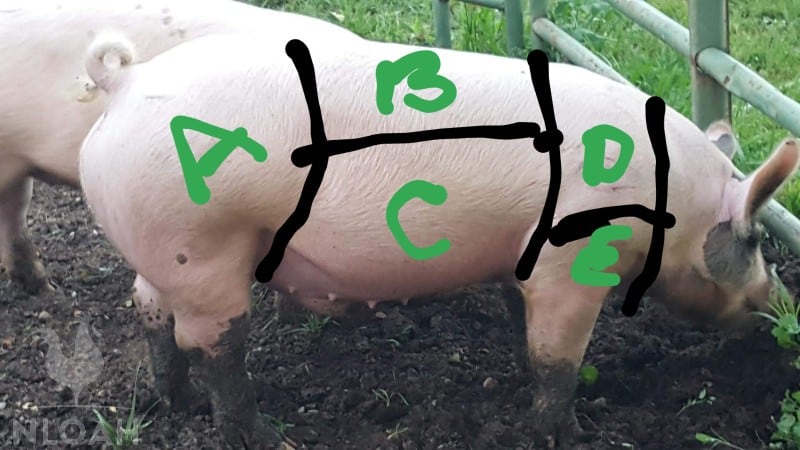
A=Ham, B=Loin, C= Belly, D=Shoulder, E=Picnic
Working The Forequarter
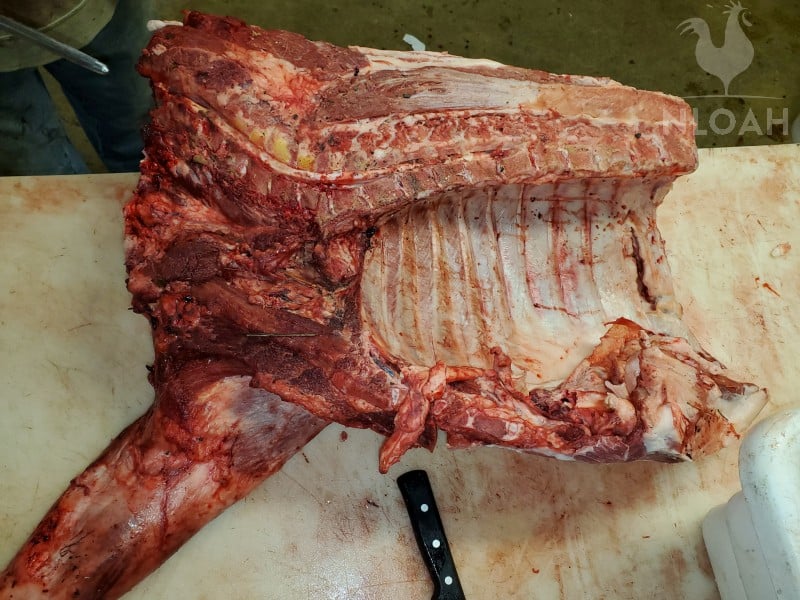
The butt is the upper part of the front leg and is also known as the boston butt or shoulder butt. The butt is where you will cut your shoulder steak and roast.
A lot of your stew meat and sausage comes from the butt due to the fact that it is a tougher cut.
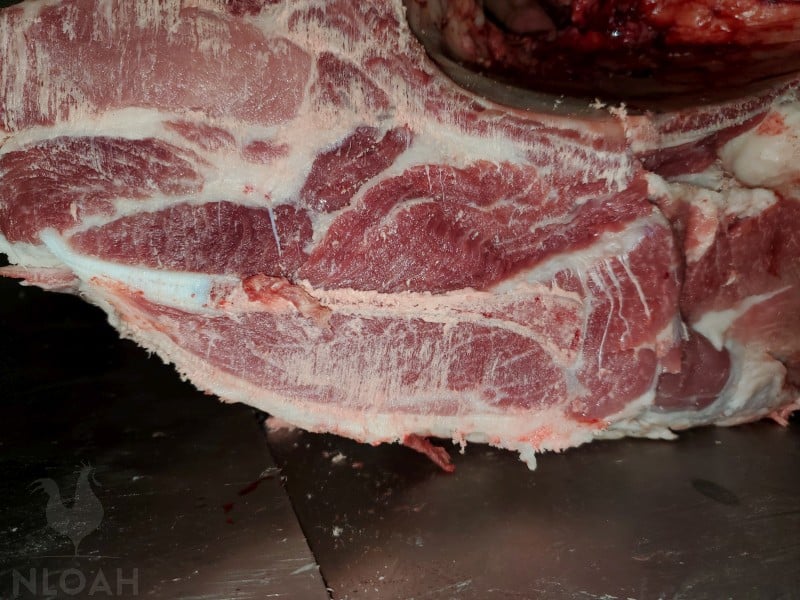
The picnic is below the butt, and also consists of the leg. A small rack of spare ribs can be cut from the end of the forequarter. The ribs are a delicious way to get more use of the carcass.
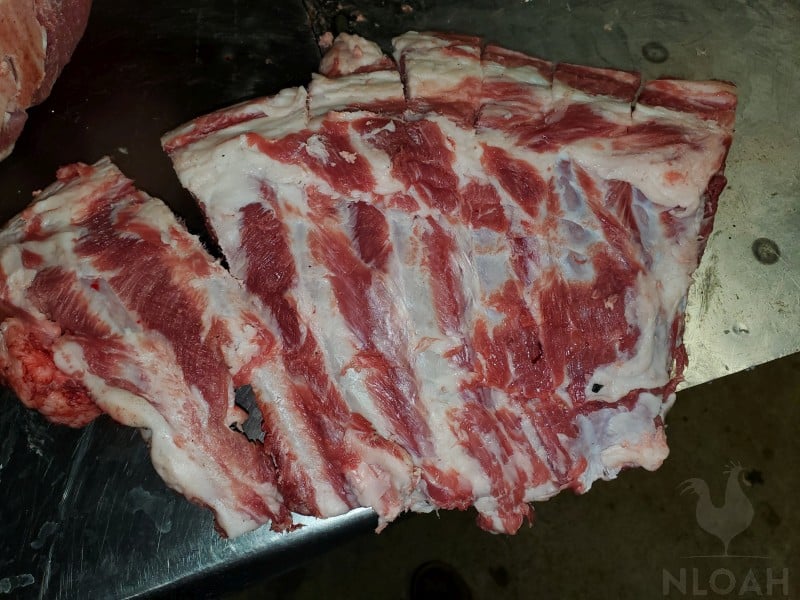
Be sure to use the neckbones and the hock to use for stew meat or soup beans. Remove the meat from the scapula so that it can be put up for grinding into sausage. You will also be able to cut a roast from the forequarter. This roast isn’t as tender, and therefore requires slow cooking.
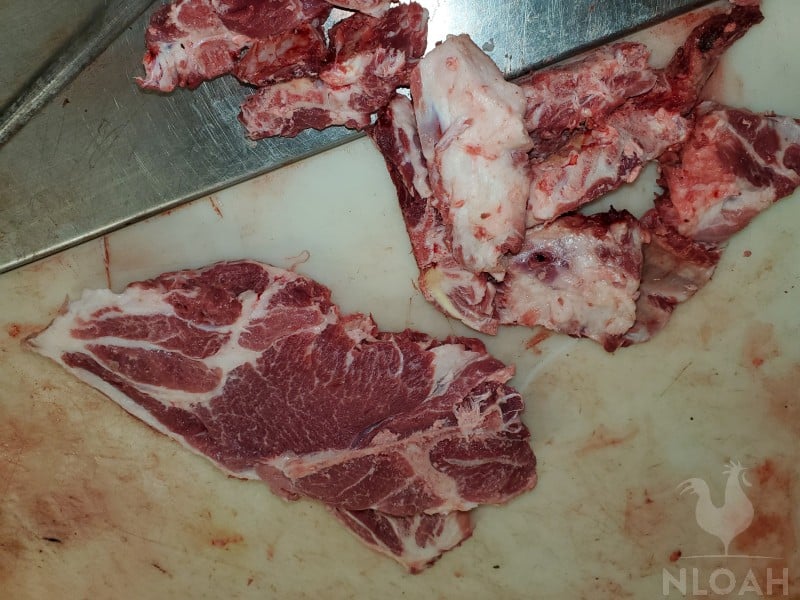
Working The Hindquarter
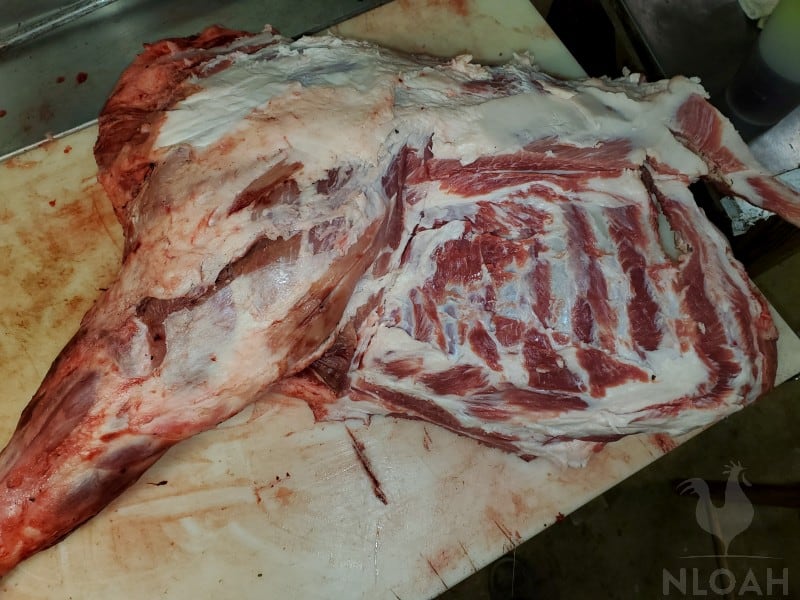
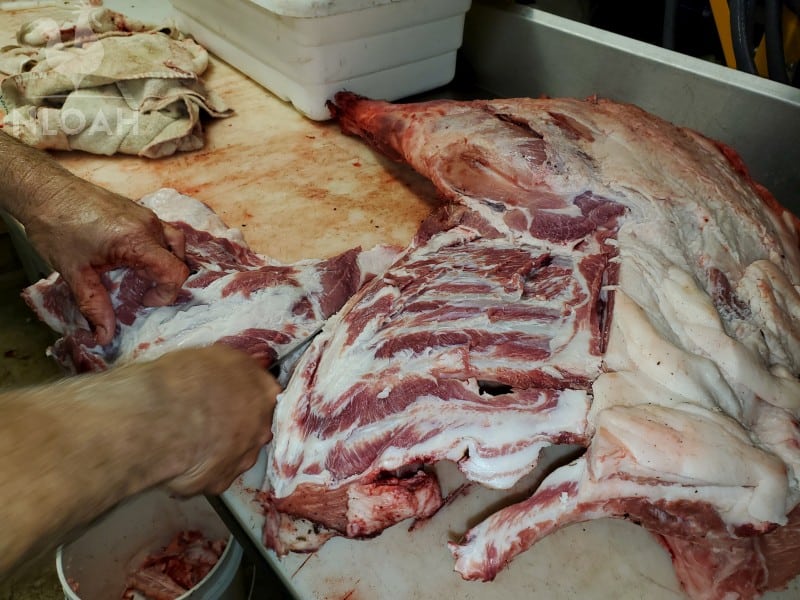
The loin is one of the most desirable sections of the pig, and is located behind the butt at the top of the pig’s back. The loin is tender and provides the tenderloin, pork chops, and loin roast.
The loin also provides country-style ribs, and several different pork chops you can cut from being loin chops and rib chops. The rib chop has a piece of the rib bone in it still.
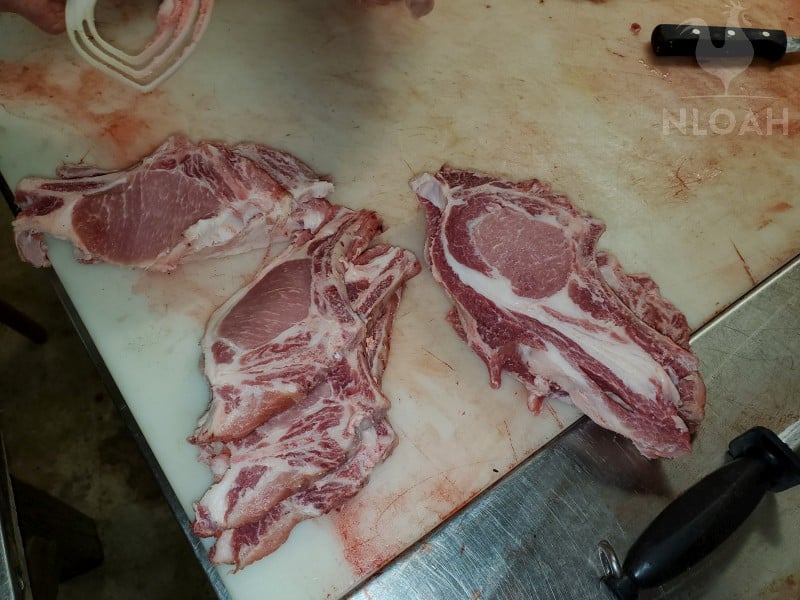
The leg or ham is the rear of the pig. This is where the largest amount of meat comes from. Here you will cut your ham into desired sizes including bone in or boneless.
You can also get some large ham steaks or choose to get cube steaks from the top of the leg.
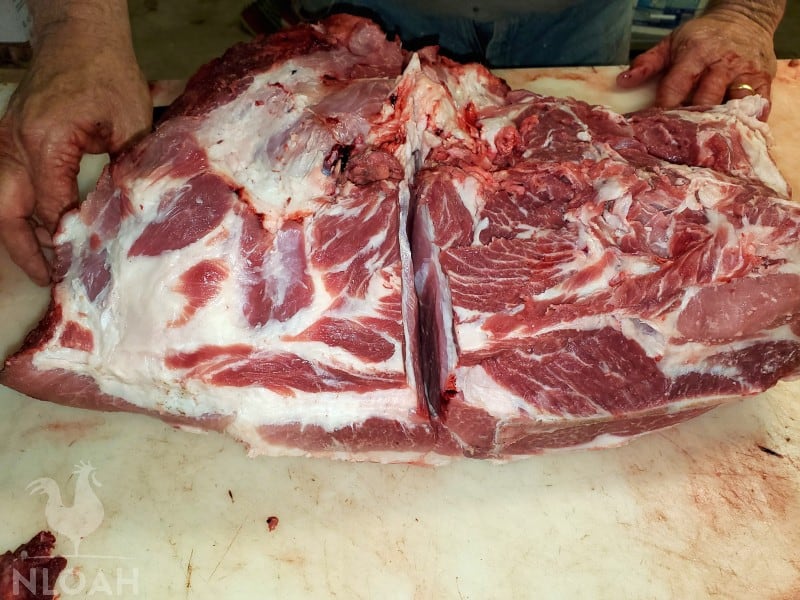
When you remove the bones be sure to cut all of the bits of meat to grind into sausage. The back fat is above the loin, and you will use that for grinding into your sausage.
The hock is the portion of the hog leg that is the knuckle, they are great for smoking and flavoring soup beans. A lot of the different bones can also be used to make bone broth for adding extra flavor to a meal.
There are several options and you can get really fancy with your cuts of meat or just keep it simple. The idea is to get the most use out of your hog, and to provide for your family.

Sarah Rodriguez is a homesteading wife and mother of five living in Appalachia. She grew up in a homesteading and logging family.
She and her husband Arnie work their 10-acre homestead together alongside their growing family. Sarah honed her self-reliance skills through 4-H and FFA at an early age and is now teaching her children to live off the land, raise livestock, and the importance of both sustainability and frugality.

– Invite a friend to help
I have butchered 3 pigs on my own and i have to say they are exhausting. im not sure if its the weight or the toughness of the skin but iv butchered 2 deer back to back and i was not worn out. Next time ill use a hoist like you have instead of trying to rope it over a beam.
I always skin them to, never had a big enough vat to scaled a pig anyway. You guys are awesome for hooking up the fire department with meat.